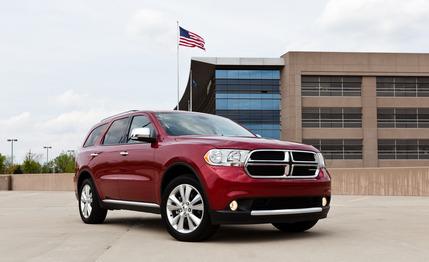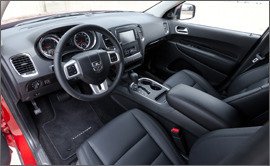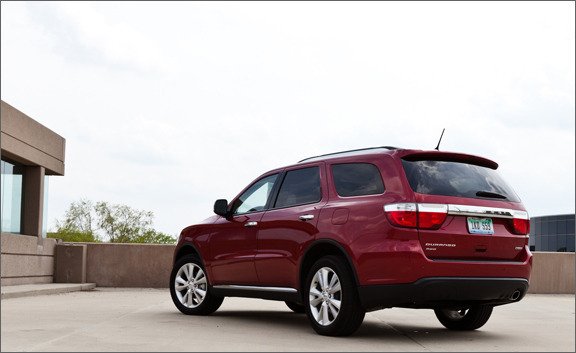
 Short Take Road Test
Short Take Road Test
What Is It?
It’s the third-generation Dodge Durango, and it marks the nameplate’s return from the sabbatical it took for the 2010 model year. Built on a lengthened version of the Jeep Grand Cherokee’s unibody platform—instead of the old body-on-frame underpinnings of its forebears—the Durango retains a rear-drive layout, but a full-time all-wheel-drive system as tested here is an option on each of the five trims. We’ve already tested an entry-level rear-drive V-6 Durango and an all-wheel-drive V-8. This is our first go with the more affordable all-wheel-drive and V-6 combo.
How Does It Drive?
The Durango’s chassis delivers impressive dynamics. At 5068 pounds, the SUV tested here is far from light, but it handles twists and turns with a fluid ease, remaining flat and composed as it challenges the laws of physics. Unlike most others in this segment, the Durango’s steering offers a good degree of feel, and the same can be said for the brake pedal. Not only is the Dodge an agile machine; its ride, even on this example’s optional 20-inch wheels, was comfortable and well damped. We noted some dissatisfaction with the 20s worn by the V-8–powered R/T we previously tested, but without the stiffened and lowered suspension of that model, the 20s were not a problem.


Our only real gripe came with the five-speed automatic transmission, which is in dire need of at least one more forward gear. The 3.6-liter V-6’s 290-hp peak coincides with the 6400-rpm redline, and the torque peak of 260 lb-ft occurs at a similarly high 4800 rpm. The wide spacing needed to stretch the five ratios and the transmission’s eagerness to upshift can strand the engine at the low end of the rev range without any power on tap. Around town, Durango drivers need a heavy right foot to keep the tranny in a low gear and keep things moving.
How Does It Stack Up?
If it’s hot sheetmetal you’re after, then the Durango should be at the top of your three-row-crossover list. We’d make the same recommendation for those buyers seeking a quiet, well-crafted interior with nice materials and an efficient layout that doesn’t overcomplicate the simple tasks of changing the temperature or radio station.


If expediency—or towing, a more likely application of power in a truck—is a priority, though, the all-wheel-drive Durango V-6 is at the other extreme. It would have placed near the back of the pack in our last roundup of three-row, AWD crossovers, with its 8.2-second run to 60 mph slotting just ahead of the test’s slowest, the Ford Flex SEL (8.4 seconds). But the Durango’s brakes, as we’ve noted in previous tests, are excellent. Its 178-foot stop from 70 mph would have been two feet longer than that of the Mazda CX-9, which stopped the shortest in that test and is a Car and Driver crossover favorite. Over our time behind the wheel of the Durango, we returned 19 mpg, smack in the middle of the estimated 16 city/22 highway figures.
What’s the Cost?
Of the five trims (Express, Crew, Citadel, Heat, and R/T) offered on the 2011 Durango, the Crew is the second rung up the ladder. It’s nicely equipped at $34,270, and AWD is a $2000 premium on top of that. Standard features include upscale items such as keyless entry and ignition, a power liftgate, a 6.5-inch touchscreen infotainment display with 30 gigs of storage, Sirius satellite radio, Bluetooth, power front seats, and a backup camera. After adding $295 for the Inferno Red Crystal Pearl paint and $5000 for the Crew Lux package—leather seats (heated in rows one and two), 20-inch wheels, power tilting-and-telescoping steering wheel, navigation, rain-sensing wipers—our all-wheel-drive Crew V-6 totaled $41,565, which is par for the course for a large, luxurious family hauler. With its comfortable yet sporty dynamics complemented by a strong equipment list, the Durango Crew has few shortcomings. If Dodge can find a modern transmission with at least one more ratio, there’s little else to improve.

